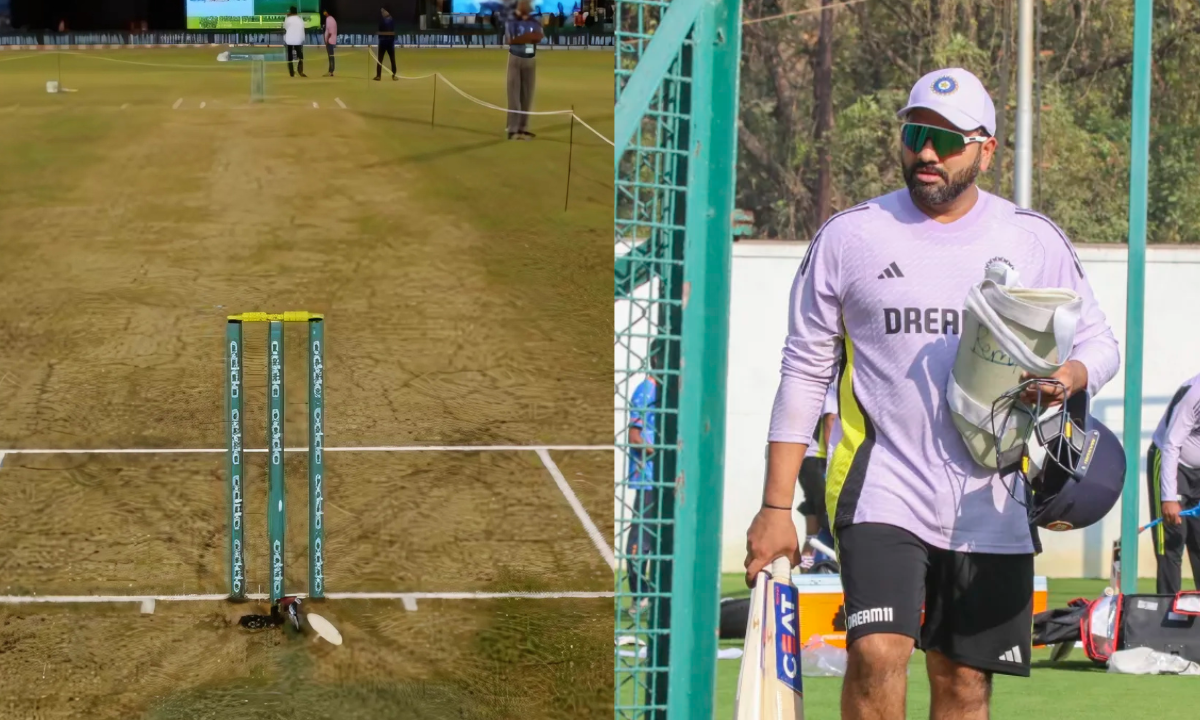IND vs ENG: The Barabati Stadium in Cuttack has always been a venue where cricket not just plays out but unfolds into a narrative of its own.
With India set to face England in the second One Day International (ODI) of the series, the pitch at this iconic ground becomes a focal point of discussion.
India, currently leading 2-1, aims to seal the series in this match, having won the first game by four wickets, thanks to the splendid performances by Shubman Gill, Shreyas Iyer, and Axar Patel.
As we look ahead to India’s last ODI on February 12 and then their match against Bangladesh in Dubai for the Champions Trophy 2025, understanding the pitch at Barabati Stadium could give us insights into what might transpire in this game.
The Nature of the Barabati Pitch

Cuttack’s Barabati Stadium is renowned for its pitch characteristics that favor spinners.
The surface here is not just about how it plays but how it evolves through the match.
Typically, it offers good assistance to the spinners, with the ball gripping and turning.
This aspect makes it particularly interesting for teams like India, which boasts a strong lineup of spin bowlers. However, it’s not just the spin but also the variable bounce that adds another layer to the game.
Pacers, especially those who can exploit this variable bounce with a semi-new ball, find themselves in a position to challenge the batters.
After the first spell when the ball loses its initial shine but retains enough hardness to move, pacers can be quite effective, making the game a true test of skill and adaptability.
Impact on Batting On IND vs ENG
For batsmen, the pitch at Barabati can be both a challenge and an opportunity.
Initially, the pitch might not offer too much turn, but as the match progresses, especially under the sun, it tends to show more character. Batsmen need to be cautious yet proactive.
The key here is reading the pitch early – how it’s behaving with the new ball, how it reacts to spin, and when the variable bounce starts to play a part.
In the first match of this series, Gill, Iyer, and Patel demonstrated this adaptability, scoring beautifully to chase down 249. Their innings showcased how one can navigate through the nuances of this pitch – patience in the beginning, followed by acceleration when the pitch and the situation allow.
Bowling Strategies
For bowlers, especially the spinners, the Barabati pitch is a canvas to paint with their craft. The turn and bounce can be exploited to keep the batsmen on their toes.
However, it’s not just about bowling tight lines; it’s about varying the pace and length to keep the batsman guessing.
The pacers, on the other hand, will look to leverage the variable bounce, particularly with a semi-new ball, to induce edges or mistimed shots.
The strategy would involve setting fields that can capitalize on this – perhaps more slips early on or catching mid-wicket as the innings progresses.
Tactical Considerations
Given the pitch’s nature, the toss might play a significant role.
Teams might prefer to bowl first, leveraging the early assistance for bowlers before the pitch settles down a bit.
However, batting first and setting a competitive total can also be a strategy, especially if one anticipates the pitch deteriorating further, thus making chasing tougher.
The captain who wins the toss will have to weigh these options carefully, considering not just the pitch but also the dew factor that might come into play in the second innings.
Match Implications
As India looks to wrap up the series with this match, the pitch at Barabati could be the silent protagonist.
For India, with the Champions Trophy around the corner, this match is not just about winning but also about fine-tuning their strategy, particularly in conditions that might resemble those they’ll face in Dubai.
The performance of their spinners and how their batsmen adapt to the pitch’s challenges will be crucial.
For England, it’s about staying alive in the series, adapting to conditions that might be less familiar, and perhaps finding a way to counter the Indian spin attack on a pitch that traditionally supports it.
In Summary
The Barabati Stadium pitch for this crucial ODI promises to be a test of cricketing acumen. It’s a pitch where strategy, skill, and adaptability will be rewarded.
For fans, it’s not just another match; it’s a narrative of how cricket can be influenced by the ground it’s played on.
As India eyes the series win and prepares for future challenges, and England looks to fight back, the pitch at Barabati will undoubtedly play its part, potentially deciding the fate of this encounter in the fine details of spin, bounce, and tactical nous.





